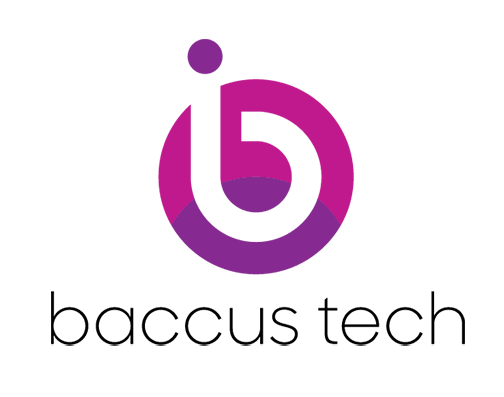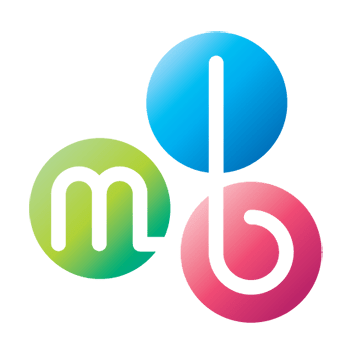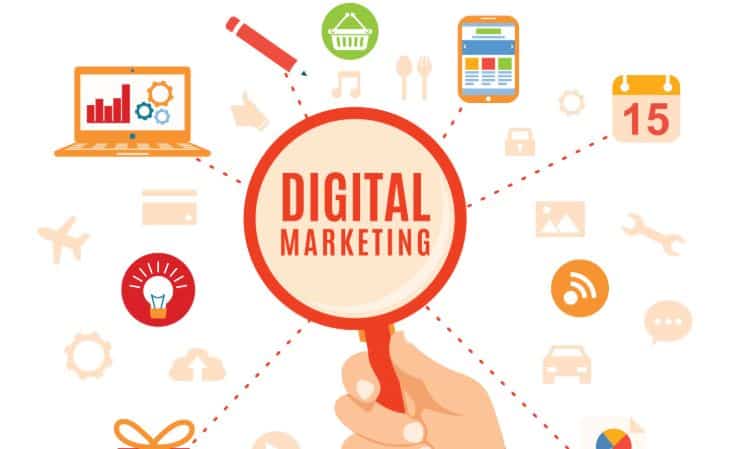Not sure about the definition of some digital marketing terms?
Check our digital marketing dictionary.
A
A/B Testing: marketing action aimed at testing different website designs, email templates, with several samples of users to analyze the results and identify the best converting ones.
Above the fold: in web design, it is the part of a website that can be seen by users without scrolling down.
Affiliation: on the web, it is a business model where for example a merchant site (A) pays another site (B) for the traffic that will be redirected to its merchant site (A). In general, the site (B) is paid when the user makes a purchase on the merchant site (A) (by commission or a fixed amount).
Alt attribute: it designates the alternative text of an image on a website that describes what the image represents when it cannot be loaded or viewed.
Anchor: it is the text pointing to a link that is visible and clickable by the user. It is of capital importance in the SEO strategy because it is used as a hint by search engines to understand what the target page is about.
API (Application Programming Interface): it is a programming interface used to make 2 applications communicate with each other by sending and receiving data.
Audience: it is the number of visitors going to a website, often calculated in the number of visits per day. But it can also designate the number of unique visitors or sessions.
B
Backlink: it is a link from a site (other than yours) that points to your website. It contributes to increasing the authority and/or the level of trust of your site.
Banner advertising (display): it is images, texts, or videos displayed on a website to promote a product, service, or company. These banners redirect to a link defined by the advertiser (offer, product, website…).
Big Data: it is all the data collected by a company about its customers, visitors, etc… This data must be sorted and analyzed to be used for decision making.
Big Tech or GAFAM: this term designates the five largest leaders in the tech and digital market (Google, Amazon, Facebook, Apple, and Microsoft).
Bounce: said of a visitor who landed on a web page and then left the site (clicked on previous, closed the window, changed the URL) without taking any action on the page. The bounce rate is, therefore, to be monitored and reduced as much as possible.
Bounce rate: number of users who leave a site after visiting only a single page, compared to the total number of users who visit the site.
Buzz Marketing or Buzz: a marketing technique consisting in using word of mouth (especially via Internet communities) to spread information about an event, a product, a service, a brand, a commercial promotion… This “buzz” usually grows as the media talks about it.
C
Call to action: it is an incentive to perform an action, often represented as a button. The call to action is crucial to engage the prospect in a business transaction, and thus maximize conversions.
Cart abandonment: a cart abandonment occurs when a visitor has left a website before validating his order, even though he has added items to his cart.
C.D.N. (Content Delivery Network): it is a set of servers located in various geographical locations around the world, and linked together and keeping a cached version of a website to optimizing its loading time anywhere in the world. It is a must-have when you have an international audience. (e.g. Cloudflare, Fastly…)
Click and Collect: it is a service allowing you to buy online but to pick up the product(s) in-store.
Click-Through Rate (CTR): it is the percentage of click compared to the number of views, usually used to talk about ads. If the ad has been viewed 1000 times and 150 people clicked on it, then it has a CTR of 15%.
Content Marketing: content created for a website/brand, to acquire traffic (can be of different styles, use different media, target different distribution channels…).
Conversion Funnel: the path taken by a user before converting into a customer/lead. This path is crucial to improve the conversion rate.
Conversion Rate: number of users who buy on a site compared to the total number of users who visit the site.
CPA (cost per acquisition): cost paid per user brought to the customer’s site. In general, it is, in fact, the average cost per conversion.
CPC (cost per click): cost paid for each click to the customer’s site.
CPL (cost per lead): cost paid for each user who has given his or her contact details to the customer’s site, usually through a form.
CPM (cost per mille impressions): cost paid for every thousand impressions of an ad or piece of content.
CRM (Custom Relationship Management): all the tools and techniques used to capture, process, and analyze customer information to develop customer relations and loyalty.
D
Display (banner ads): in online advertising, it refers to the purchase of space on various media (websites, social media…).
Duplicate content: Identical or very similar content available at two different URLs. Search engines tend to ignore duplicate content on a website and to give credit only to the original piece published.
G
Google Ads (Ex Adwords): Google’s advertising service. Can be used to buy ads and banner ads that will be displayed on the search engine or on partner sites (such as YouTube…) according to the keywords typed by users, their navigation history, or behavior online.
Google Analytics: a free tool offered by Google to study and analyze the traffic of a website or app.
Growth Hacking: different innovative and original techniques, often leveraging tech and online platforms, to help a company/service/product/brand grow faster.
Google Panda: an update of Google’s search algorithm that improves the relevance of search results and penalizes low quality, irrelevant content and backlinks.
Google Penguin: an update of Google’s search algorithm launched in 2012 to penalize spamdexing and artificial link building.
Guest blogging: a practice that consists of letting a guest write an article on another’s blog for a fee (e.g. a backlink).
H
H* tags: these tags help structure text on a web page from H1 to H6. They are seen as an introduction to the text that will follow (by Google and users), by order of importance (1 to 6).
I
Inbound Marketing: a digital marketing strategy consisting of attracting users with content (often free) rather than going after them with traditional marketing or ads.
L
Landing page: a page where the user lands after clicking on an ad or link. Can be the home page of a site or a landing page built to fulfill a commercial goal.
Lead: commercial contact between a prospect and a company. Visitors can be turned into leads by filling out a form, accepting to receive newsletters, or creating an account on a site.
Link purchase: it is about paying a website A to create a backlink pointing to a website B.
Link Building (SEO): the action of acquiring links pointing to a website. The goal is to obtain a maximum of powerful and relevant links to increase a website’s rankings and organic traffic.
M
Marketplace: a website that connects merchants and buyers.
Meta tags: HTML tags included in a web page to help search engines understand the structure and nature of that page. They are often used by Google to create metadata but no longer (directly) impacts the rankings of a page.
Meta description: a description of the page of up to 150-165 characters shown in search results.
N
Newsletters: informative or commercial emails sent to users of a website.
NoFollow: no-follow is an attribute added to a link to signal search engines it should not be followed by the crawler.
O
Opt-in: in an opt-in form or service, a user needs to give his consent to give a company access to his data or to get access to a service.
Opt-out: in an opt-out form or service, a user gives implicit consent to terms of service to get access to a service. He needs to take an action (e.g. untick a checkbox) if he wants to opt-out of the service.
P
Pure Players: web companies that sell their products or services only online.
R
Reach: in advertising, reach is the number of people reached by a piece of content or ad. In other words, the number of people that have seen a piece of content or ad.
ROI (return on investment): the profit generated by a marketing expense in comparison to its cost. It is used to measure whether marketing expenses bring more profit than they cost.
S
SEA (Search Engine Advertising): purchase of ads space on search engines on keywords relevant to the company to acquire additional traffic to a site.
SEM (Search Engine Marketing): the use of search engines to target your audience, either through SEO methods or online advertising.
SEO (Search Engine Optimization): all the techniques that help you improve your websites’ rankings on search engines and increase your organic traffic.
SERP (Search Engine Result Page): search results for a query on search engines.
Siloing (SEO): strategy consisting in creating contextualized internal links between pages covering related topics on a website to improve rankings on search engines.
SMO (Social Media Optimization): means used to attract users to a site via content and various actions on social media.
Sponsored Link: ads purchased on search engines and social media allowing a link to be placed in the first search results on selected keywords or for a specific audience.
T
Title tag: a sentence of about 55-60 characters present in the header of a web page, and used by browsers and search engines as the title for the page.
Tracking: all the technical solutions allowing to monitor and analyze the actions taken by users on a website.
UGC (user-generated content): content generated by users on a website, such as videos, photos, text…
V
Visual Identity: these are the original elements (text, image, color, drawing, font …) that can distinguish a brand and its website from its competitors.
W
Web Analytics: different measures to analyze the behavior of a website’s users (unique visitors, page views, visits, average visits, conversion funnel, bounces…).


